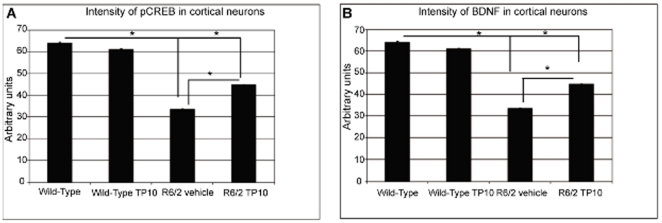Figure 10. Effect of TP-10 treatment on pCREB and BDNF levels in cortex of R6/2 mice.
(A) Quantification of the intensity of pCREB immunoreactivity associated with NeuN-labeled cortical neurons at age 13 weeks. The intensity of pCREB immunoreactivity associated with NeuN-positive cells were carried out (see Methods) on sections from wild type or R6/2 mice treated with vehicle or TP-10 from 4 to 13 weeks of age (n = 6/group). A two way ANOVA indicated an overall significant effect of genotype (F(1,1558) = 868.66; p<0.000) and treatment (F(1,1558) = 45.46; p<0.0000) and a genotype X treatment interaction (F(1,1558) = 45.46; p<0.0000). Post hoc analysis indicated that there was no statistically significant difference in pCREB level in wild type mice treated with TP-10 or vehicle. R6/2 mice treated with vehicle had a significantly reduced pCREB level compared to the vehicle treated wild type group. The pCREB level in R6/2 animals treated with TP-10 was not statistically different to that in the wild type groups, and was significantly greater than that of the vehicle treated R6/2 animals (p<0.000). (B) Intensity of BDNF immunoreactivity associated with NeuN-labeled cortical neurons. A two way ANOVA indicated an overall significant effect of groups (F(1,1148) = 540.66; p<0.000) and treatment (F(1,1148) = 52.13; p<0.0000) and a genotype X treatment interaction (F(1,1148) = 52.69; p<0.000). Post hoc analysis indicated that there was no statistically significant difference in BDNF level wild type mice treated with TP-10 or vehicle. R6/2 mice treated with vehicle had a significantly reduced BDNF level compared to the vehicle treated wild type group. The BDNF level of R6/2 animals treated with TP-10 was statistically different to that in the wild type groups, and was significantly greater than that of the vehicle treated R6/2 animals (p<0.000008).

